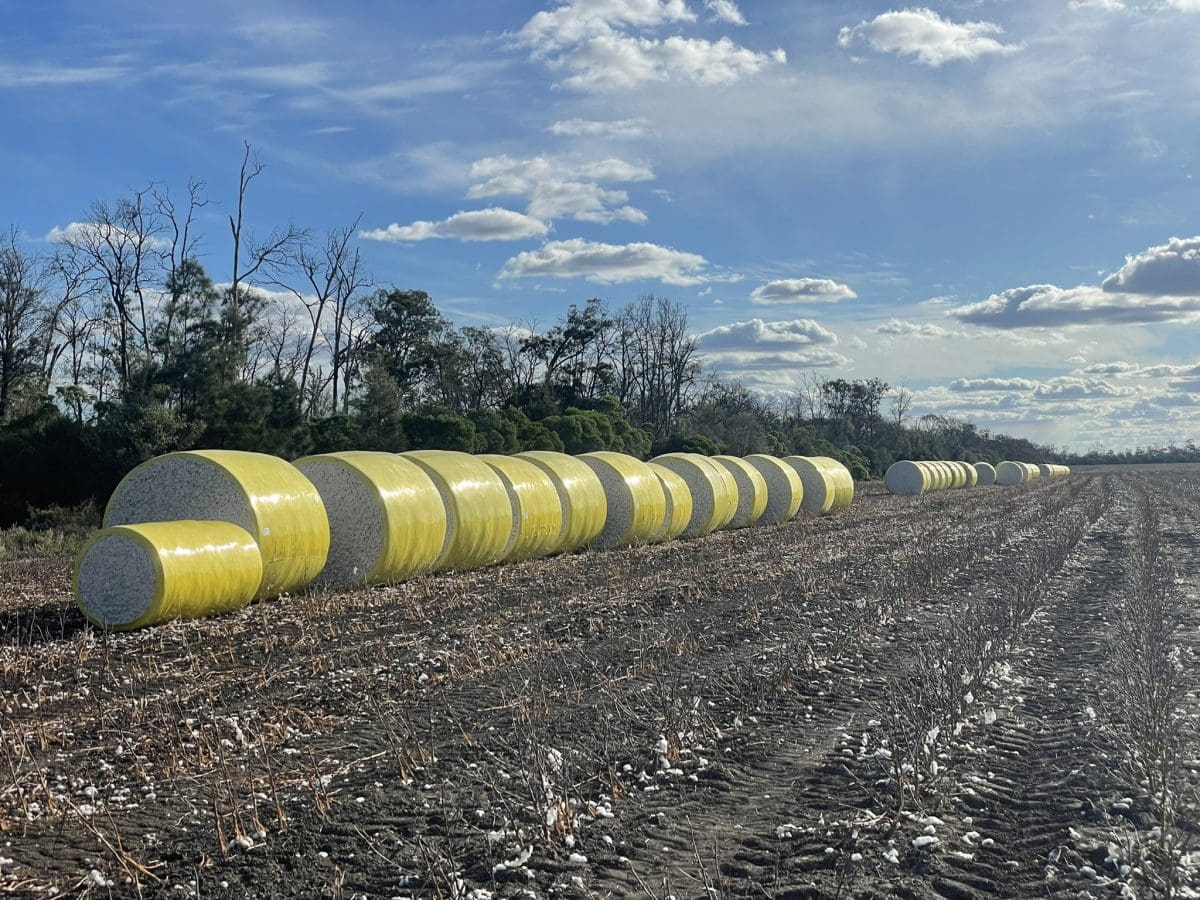
Picking of Australia’s bumper cotton crop is gathering pace, and some trucks are moving out of grain to cart bales for the next few months. Photo: Tony Lockrey, AMPS Moree
PRICES for wheat, barley and sorghum have jumped by up to $25 per tonne in the past week, with the redeployment of some trucks into cotton carting a bullish factor in the northern market.
Cotton now being picked in New South Wales and Queensland will be Australia’s first bumper crop in five years, and its second biggest on record.
The cotton task is about to hit its peak, and will also reduce the availability of grain trucks in southern NSW when ginning starts there in the next week or two.
Export demand for wheat, barley and sorghum remains buoyant as prices breach season highs. Domestic consumers are having to bid strongly to secure coverage over coming months.
| Today | Apr 28 | |
| Barley Downs | $405 | $380 |
| SFW wheat Downs | $435 | $415 |
| Sorghum Downs | $360 | $340 |
| Barley Melbourne | $422 | $420 |
| ASW wheat Melbourne | $430 | $420 |
| SFW wheat Melbourne | $420 | $410 |
Table 1: Indicative delivered prices in Australian dollars per tonne.
North seeks barley
A hectic export program for wheat and sorghum out of Brisbane, and for wheat out of Newcastle, is absorbing much of the market’s attention for grain.
Downs feedlots are buying sound, and downgraded, wheat and barley from well south of the Queensland-NSW border, with F3 barley trading at around $70/t below F1.
With barley from the north unable to find a volume export pathway, it remains in hot demand on the Downs from stockfeed milling generally, and for pig, poultry and feedlot operations.
“If someone offered you barley at $400, you’d jump all over it,” one trader said.
The north has had a reasonably dry week, allowing growers to harvest sorghum, mungbeans and cotton as they outturn sorghum, wheat and barley from their storages, and advance the planting of winter wheat and barley.
Consumers have made a solid start on their July coverage, and some are buying for the entire third quarter as global indicators remain more bullish than bearish.
St George had 16 millimetres of rain in the week to 9am today, and Moree, Mungindi and Narrabri had 10-16mm, but other cotton-growing areas of Queensland and northern NSW areas had a dry week, which has allowed picking and carting to gins to advance.
“A number of trucks have gone on to the cotton season, and dropped the tipper trailers to put on chain beds.”
However, once gin yards fill up, the call on trailers to haul cotton may moderate as ginners plan for a big season, which could free up some more trucks to return to grain.
“Gins are restricting how much growers can bring in to a point at once.”
To accommodate the limited availability of trucks, trade sources report many consumer sites have expanded receival hours, with some now taking in grain around the clock.
Southern
Rain concentrated in the Central West and on the south-west slopes of NSW has slowed planting activity for some, as growers across the Australian grainbelt finish their canola planting and move on to cereals.
At Young, Grain Focus principal Michael Jones said grower interest in selling has gone quiet.
“People are madly trying to spray and sow between rain events,” Mr Jones said.
SFW-type wheat is trading at $410/t delivered Port Kembla, where many trucks are heading to help compensate for temporary closure of one of the port’s two feeder grain lines.
Mr Jones said consumers were pushing out into July on coverage and an expected continuation of export strength.
“They’ve got to be at port equivalent, otherwise it will drive straight past them.”
“Export is still setting the pace.”
The export pull in port zones is weakest at the most distant points, and Mr Jones said this had up-country consumers looking inland for road-delivered loads.
“They’re shopping further west.”
In Victoria, quoted grain markets have risen $2-$10/t in the past week.
One trader said freight remained “very tight” because road transport was supplementing an underperforming rail network feeding into Geelong and Portland.
“The price is as much about freight as it is about grain.”
He said growers were selling modest-sized parcels of wheat and barley, but were preoccupied with planting their winter crop.
“Growers are keen to sit on the tractor.”
Falls of most 5-20mm over much of the Mallee and Wimmera have been welcomed in the past week, but most South Australian growers in districts other than the Lower Eyre Peninsula are still waiting for a double-digit fall to fire up their 2022-23 planting programs.
Grain Central: Get our free news straight to your inbox – Click here

HAVE YOUR SAY